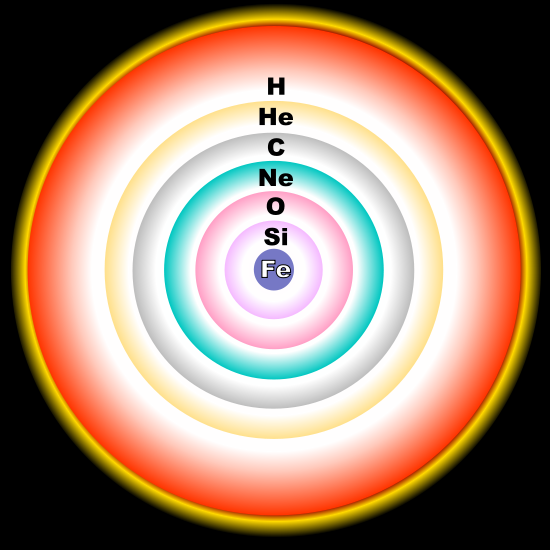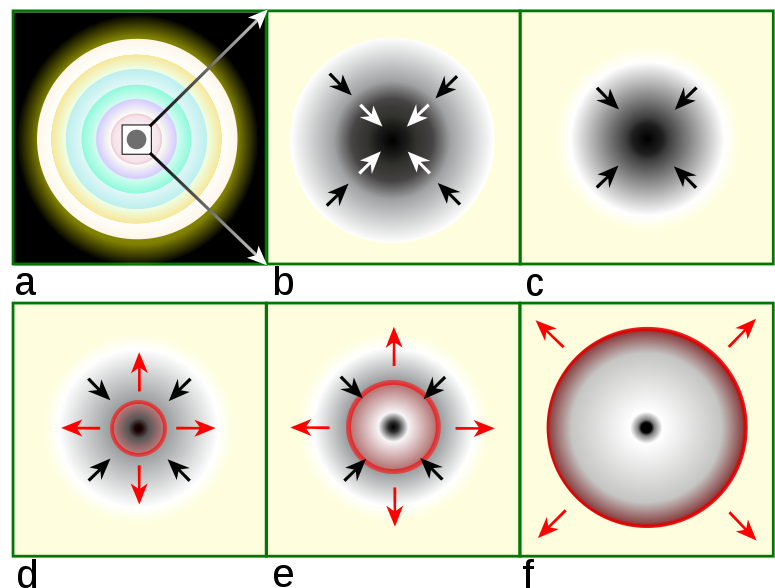What is a Supernova?
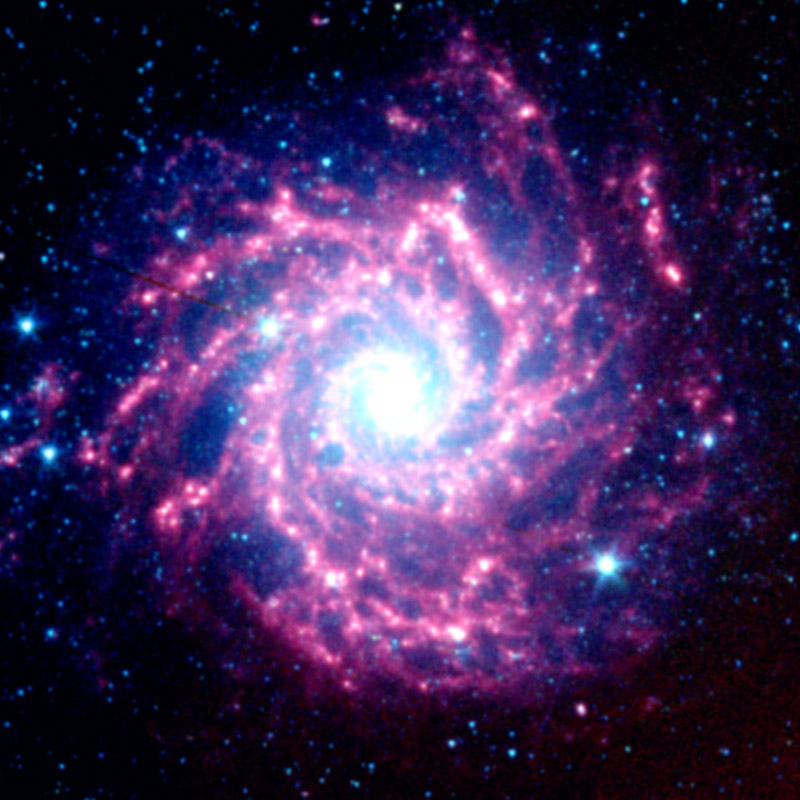 To say in three words, a supernova is an exploding star. Okay, that was more than three, but you get the point. A supernova is more significant than a nova, but less so than a hypernova. Supernovae are very bright and generate bursts of radiation that can briefly outshine a whole galaxy before declining in brightness over many weeks or months. In this period a supernova can emit as much energy as the Sun might over its entire lifetime.
To say in three words, a supernova is an exploding star. Okay, that was more than three, but you get the point. A supernova is more significant than a nova, but less so than a hypernova. Supernovae are very bright and generate bursts of radiation that can briefly outshine a whole galaxy before declining in brightness over many weeks or months. In this period a supernova can emit as much energy as the Sun might over its entire lifetime.
How Supernovae are Studied
By using optical telescopes, astronomers can approximate the amount of light generated by a supernova. These measurements can be used to determine how the luminosity and color of a supernova vary with time.
Astronomers may examine the light through a prism, which breaks the light from a supernova into the spectrum of colors that composes it. From this, astronomers can gauge how the brightness of light depends on that light's wavelength. The luminosity could change at all wavelengths. The spectrum of a supernova can very with time as well, until it fades entirely of course.
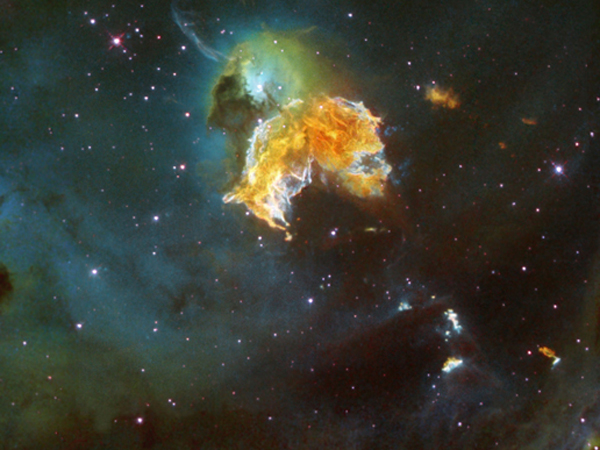 The study of a supernova is more than just a study of any ordinary light show. Both the light and spectrum of color of a supernova can be used to make conclusions about the physics that occurs during and after supernova explosions. Understanding how a supernova explosion occurs and progresses is crucial to understanding why certain stars go boom. Supernovae are responsible for producing and dispersing elements into the interstellar medium. The elements that form stars, planets, and life on Earth are created and spread by supernovae. You could say that we are made of stardust.
The study of a supernova is more than just a study of any ordinary light show. Both the light and spectrum of color of a supernova can be used to make conclusions about the physics that occurs during and after supernova explosions. Understanding how a supernova explosion occurs and progresses is crucial to understanding why certain stars go boom. Supernovae are responsible for producing and dispersing elements into the interstellar medium. The elements that form stars, planets, and life on Earth are created and spread by supernovae. You could say that we are made of stardust.
Naming Convention
Supernovae are reported to the International Astronomical Union's Central Bureau for Astronomical Telegrams, which assign them a name. The name begins with “SN”, the prefix for supernova, followed by the year, followed by a string of letter from A to Z. The first 26 supernovae are attached with a capital letter (A-Z). Following this are pairs of lower-case letters, such as aa, ab, ac, so on and so forth. For example the 367th supernova discovered in 2005 would be named SN 2005 nc.
This naming convention was utilized since 1885. However, up until 1947, rarely would more than one supernova was found per year. Two-letter designations were scarcely necessary until 1987, and since 1988, they have been necessary more and more every year.
Supernovae Types
Since 1941, Rudolf Minkowski discovered that some spectra contain hydrogen and some do not, and therefore supernovae are classified by Type I, ones lacking hydrogen in their spectra, and Type II, ones that strongly show strong hydrogen lines.
Since 1985, Type I supernovae have been classified further. Type Ia supernovae have a silicon spectral line at 615 nm, and Type Ib does not. Type Ib supernovae have strong helium lines, and Type Ic do not.
Type I supernovae are classified such because of the sharp maxima and smooth decay of light in their light curves. The initiation of a Type I supernova can be modeled as an explosion of a carbon white dwarf that is crushed under the pressure of electron degeneracy.
Supernovae Models
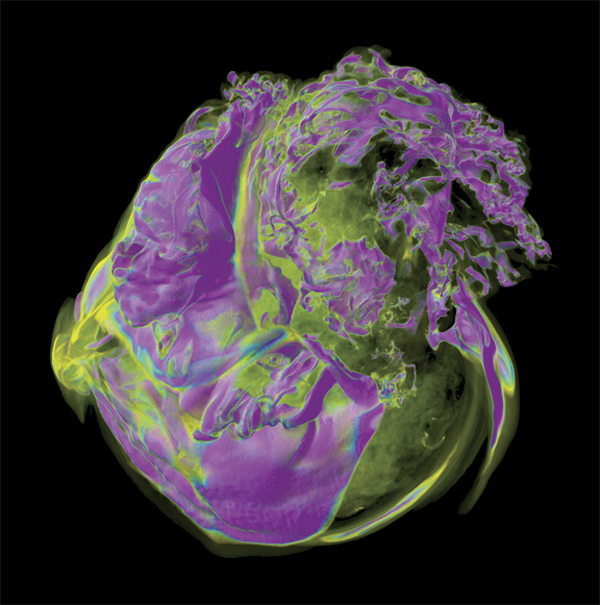 The assumption follows that a white dwarf accumulates enough mass that it exceeds the Chandrasekhar limit of 1.4 solar masses (for white dwarves, this is the mass at which the star's core can no longer resist gravitational collapse). The core temperature of the white dwarf rises dramatically, setting off chains of nuclear fusion reactions that essentially blow the star up.
The assumption follows that a white dwarf accumulates enough mass that it exceeds the Chandrasekhar limit of 1.4 solar masses (for white dwarves, this is the mass at which the star's core can no longer resist gravitational collapse). The core temperature of the white dwarf rises dramatically, setting off chains of nuclear fusion reactions that essentially blow the star up.
This model is consistent with the fact that Type I supernovae are hydrogen deficient, since white dwarves contain nearly zero hydrogen. Furthermore, the slow decay of light is consistent with the model, because the radioactive decay of unstable heavy elements produced by the supernova produces most of the energy.
Supernovae of Type I can be further categorized into Types Ia, Ib, and Ic. Type Ia supernovae are indicated by the lack of hydrogen and have an observable ionized silicon line at 615.0 nm. Type Ib supernovae have a non-ionized helium line at 587.6 nm and no silicon absorption feature at 615.0 nm. Type Ic supernovae have feint or no helium lines as well as no silicon absorption features near 615.0 nm. Sometimes Types Ib and Ic supernovae are hard to distinguish between because they are so similar, so astronomers may indicate “Type Ibc” to avoid the trouble of precise naming.
Type II supernovae are modeled after massive stars that explode and/or implode. A plateau is apparent in their light curves a few months after initiation. The explanation for the plateau is that energy is generated by the heating and cooling of the star's outer layer as it is carried into space. The observation of the strong hydrogen and helium spectra confirms this, as there should be a large amount of these gaseous elements on the outermost layers of the massive star.
Type II supernovae can be further categorized based on their spectra. Type IIP depicts a plateauing in its light curve. Type IIL shows a linear decline in its light curve (magnitude vs. time). Furthermore, while most Type II supernovae depict wide emission lines that indicate velocity expansion at the scale of thousands of km/s, some possess relatively narrow lines. These are labeled as Type IIn (“n” as in “narrow”). Supernovae that are peculiar are notated with “pec”. Some supernovae change types over the course of weeks and months, starting with hydrogen lines that get dominated by helium lines. The combination of features between Types II and Ib have contributed to the notation of these supernovae as Type IIb.
Where Supernovae Occur
 Supernovae have been observed in galaxies across the entire Universe. There are three types of galaxies: ellipticals, spirals, irregulars. Type Ibc and II supernovae have been taking place in spiral and irregular galaxies, specifically in areas of these galaxies where massive stars have formed in the previous 10 million years or so. Since Type II has not been seen in elliptical galaxies, it is said that these supernovae occur with explosions of massive stars.
Supernovae have been observed in galaxies across the entire Universe. There are three types of galaxies: ellipticals, spirals, irregulars. Type Ibc and II supernovae have been taking place in spiral and irregular galaxies, specifically in areas of these galaxies where massive stars have formed in the previous 10 million years or so. Since Type II has not been seen in elliptical galaxies, it is said that these supernovae occur with explosions of massive stars.
Type Ia supernovae have been observed in all galaxy types, but generally not near massive star formations. Since few to no stars form in elliptical galaxies, it is said that Type Ia supernovae occur from stars that are older and less massive.
Supernovae Theories: Death Star
Theorists tend to notice that stars greater than 8 solar masses tend to explode, if they do, as Type II and Type Ibc supernovae. These stars are relatively young and massive, which manifest in irregular or spiral galaxies. They also notice that Type Ia supernovae can be depicted by the explosion of low-mass stars called white dwarves.
The study of how stars develop and evolve over time throughout their lives is important to understanding supernovae. A close examination of stars can be distinguished into an internal study and an external study, since two different events occur on the inside and outside of stars. Stars produce energy over the course of their lifecycle by the process known as nuclear fusion.
Nuclear fusion is a process in which atomic nuclei (the proton/neutron cores of atoms) fuse to form new elements as well as release incredible amounts of energy. In stars, the nuclei of lighter elements like hydrogen and helium fuse, under extreme temperatures and pressures at the central core of stars, to produce nuclei of heavier elements. Note that electrons are in complete free flow from atomic nuclei under the extreme pressures and temperatures at the core of stars.
Using the mass-energy principle that Albert Einstein discovered, E=mc2 (energy = mass times the square of the speed of light), we know that large masses of matter produce energy. Nuclear fusions inside stars generate extreme amounts of energy that burst to the stellar exterior, some of which becomes the light that shines from stars.
In the core of massive stars greater than 8 solar masses, nuclear fusion results in a chain of element formations: from hydrogen to helium nuclei, to complicated reactions that eventually result in silicon nuclei, which ultimately form iron nuclei. An iron nucleus is the most stable naturally occurring element outside of supernovae explosions; it cannot be fused into heavier elements without incredibly large bursts of energy. Because of this, the core of massive stars slowly becomes a large chunk of iron nuclei.
Once a star's core is completely saturated with iron nuclei, nuclear fusions will cease, and the star's energy production will come to an end. Without energy to support itself, the star will collapse: its core can no longer resist the force of its gravity. The star's core and all the matter above the core will be crushed inward by gravity.
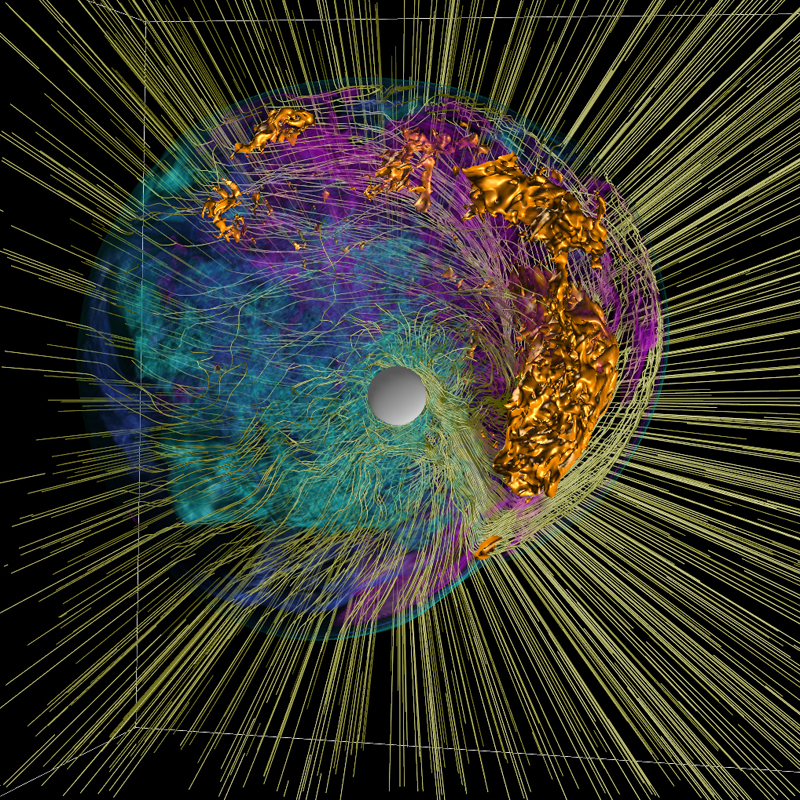 Ultimately, only neutrons will survive the implosion of the star, and in the final act, the neutrons form a new core which becomes that which is known as a neutron star. As the neutron core stabilizes, what is left of the previous massive star will flow in limbo.
Ultimately, only neutrons will survive the implosion of the star, and in the final act, the neutrons form a new core which becomes that which is known as a neutron star. As the neutron core stabilizes, what is left of the previous massive star will flow in limbo.
Once the core stops collapsing, like a super-compressed perfect spring, it bounces out and releases all of the compressed energy. This shockwave will burst and rip through the outer layers of the star. All that was the massive star extinguishes in an, excuse the pun, astronomical explosion, and only the new neutron star might survive the blast.
Massive stars tend to die with a Type II or Type Ibc supernova. The entire supernova process occurs over a scale of a few milliseconds.
Sometimes a collapsing core of neutrons will become so massive that it never quite rebounds and will instead form an event horizon (the outer layer of a black hole in which not even light can escape) at the bottom of its collapse. The pressures built up never quite escape this event horizon, and there is no shockwave to start a supernova. Eventually the star remnants fall into the newly forming black hole. It is theorized that sometimes a supernova can result in a black hole formation, under certain conditions.
The Sun will not die with a supernova. This Sun will, at a slow pace, fuse its core hydrogen nuclei into helium nuclei over the next 5 billion years or so. Once its core becomes all helium, these will slowly fuse into carbon nuclei in a relatively short amount of time.
The carbon nuclei in turn will not fuse into anything else because the Sun is not hot enough. The carbon core would no longer support the Sun and collapses under its own weight. Despite this, the blanket of free flow electrons in the Sun will resist total collapse. The Sun will become a white dwarf.
What remains outside of the white dwarf get shrugged off to form a planetary nebula. As this nebula slowly spreads into space over thousands of years, the white dwarf of what was the Sun will continue to glow away what is left of its energy over the course of the next billions of years. This white dwarf will continue to exist until it reaches conditions for a Type 1a supernova, which is explained above under the “Supernovae Models” section.
Supernovae Effects
The explosion caused by a supernova has significant effects on the space surrounding it. The tremendous shockwave caused by a supernova can press and condense gas in the environment. If the gas was quite dense to begin with, then the pressure exerted on it could collapse into the formation of new stars. A supernova explosion could create new elements, especially those heavier than iron. These new elements disperse into space and enrich surrounding gas mediums. In this way, stars formed after supernovae tend to have greater heavy element concentrations. In fact, it is this very enrichment of the gas in the Milky Way that has contributed to the rise of life on Earth!
Supernovae may also send small proton, alpha (helium nuclei), and electron particles through space (these are all called cosmic rays or cosmic ray particles). It is said that the beaming of these high-energy, high-momentum particles on Earth contributed to genetic mutation, and therefore, biological evolution on Earth.
Supernovae and the Fate of the Universe
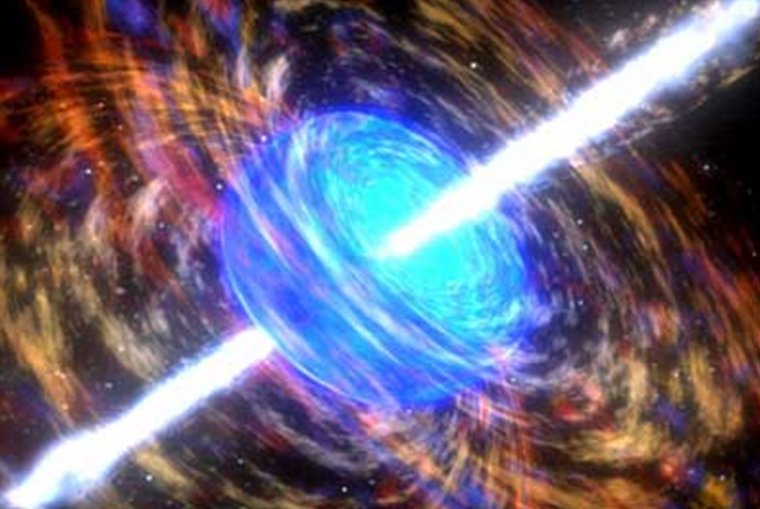 Supernovae of Type Ia are the brightest subjects in the Universe. They are used as signpost beacons of light that could be used to estimate distances in space. Astronomers are currently utilizing light from Type Ia supernovae to measure distances in nearby galaxies. It is theorized that by measuring these distances along with the speeds at which these galaxies are moving away from us (due to the Universe constantly expanding), a serious study done by Edwin Hubble, we can measure how much matter is in the Universe as well as the Universe's final fate.
Supernovae of Type Ia are the brightest subjects in the Universe. They are used as signpost beacons of light that could be used to estimate distances in space. Astronomers are currently utilizing light from Type Ia supernovae to measure distances in nearby galaxies. It is theorized that by measuring these distances along with the speeds at which these galaxies are moving away from us (due to the Universe constantly expanding), a serious study done by Edwin Hubble, we can measure how much matter is in the Universe as well as the Universe's final fate.
According to Einstein and the theory of general relativity, the amount of matter in the Universe contributes to what geometry it has. Einstein theorized that matter curves the space and time around it, and therefore the whole Universe. More matter means more curvature, more curvature means that the expansion of the Universe will halt due to gravitational force. If this occurs, then Universe will implode in a Big Crunch. On the other hand, if there is insufficient matter to cause a Big Crunch, the expansion of the Universe will continue to no end.

